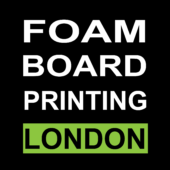The Versatile Utility of Foam Board: A Material of Many Facets
Introduction: In the realm of creative endeavors and practical applications alike, one material stands out for its versatility and utility: foam board. This lightweight yet sturdy material has found its way into a myriad of uses across various industries, from arts and crafts to construction and signage. Let’s delve into the multifaceted world of foam board and explore its diverse applications.
Arts and Crafts: Foam board is a staple in the realm of arts and crafts due to its ease of use and adaptability to various techniques. Artists and hobbyists often employ foam board as a canvas for painting or drawing, thanks to its smooth surface that readily accepts different mediums. Its lightweight nature also makes it ideal for creating 3D sculptures and models, allowing artists to bring their creations to life with ease. Additionally, foam board serves as a reliable backing material for mounting photographs, prints, and posters, providing a clean and professional presentation.
Education and Presentation: In educational settings, foam board plays a crucial role in presentations and visual aids. Teachers and students utilize foam board to create eye-catching displays, charts, and diagrams for classroom presentations. Its rigidity ensures stability, while its lightweight properties make it easy to transport and handle. Whether used for science fair projects, history timelines, or interactive learning activities, foam board provides a versatile platform for conveying information effectively.
Architectural and Model Making: Foam board is a favorite among architects, designers, and model makers for its suitability in creating architectural models and prototypes. Its durability and ease of cutting and shaping make it an ideal material for representing building structures and landscapes in miniature form. Whether constructing scale models of houses, cities, or landscapes, foam board allows for precise detailing and experimentation with design concepts. Additionally, its affordability compared to traditional model-making materials makes it an attractive choice for both professionals and students.
Signage and Display: In the realm of advertising and marketing, foam board shines as a cost-effective solution for signage and display purposes. Its lightweight construction makes it easy to hang or mount, while its smooth surface provides an excellent canvas for printing vibrant graphics and text. Foam board signs are commonly used for trade shows, exhibitions, retail displays, and event promotions, where visibility and portability are paramount. With the ability to be cut into various shapes and sizes, foam board offers endless possibilities for creating attention-grabbing signage.
Conclusion: From the realms of arts and crafts to education, architecture, and advertising, foam board has firmly established itself as a versatile and indispensable material. Its lightweight yet durable construction, along with its ease of cutting and shaping, makes it an ideal choice for a wide range of applications. Whether used by artists, educators, architects, or marketers, foam board continues to inspire creativity and innovation across diverse fields. As technology advances and new materials emerge, foam board remains a timeless staple, proving that simplicity and versatility are the hallmarks of enduring utility.
